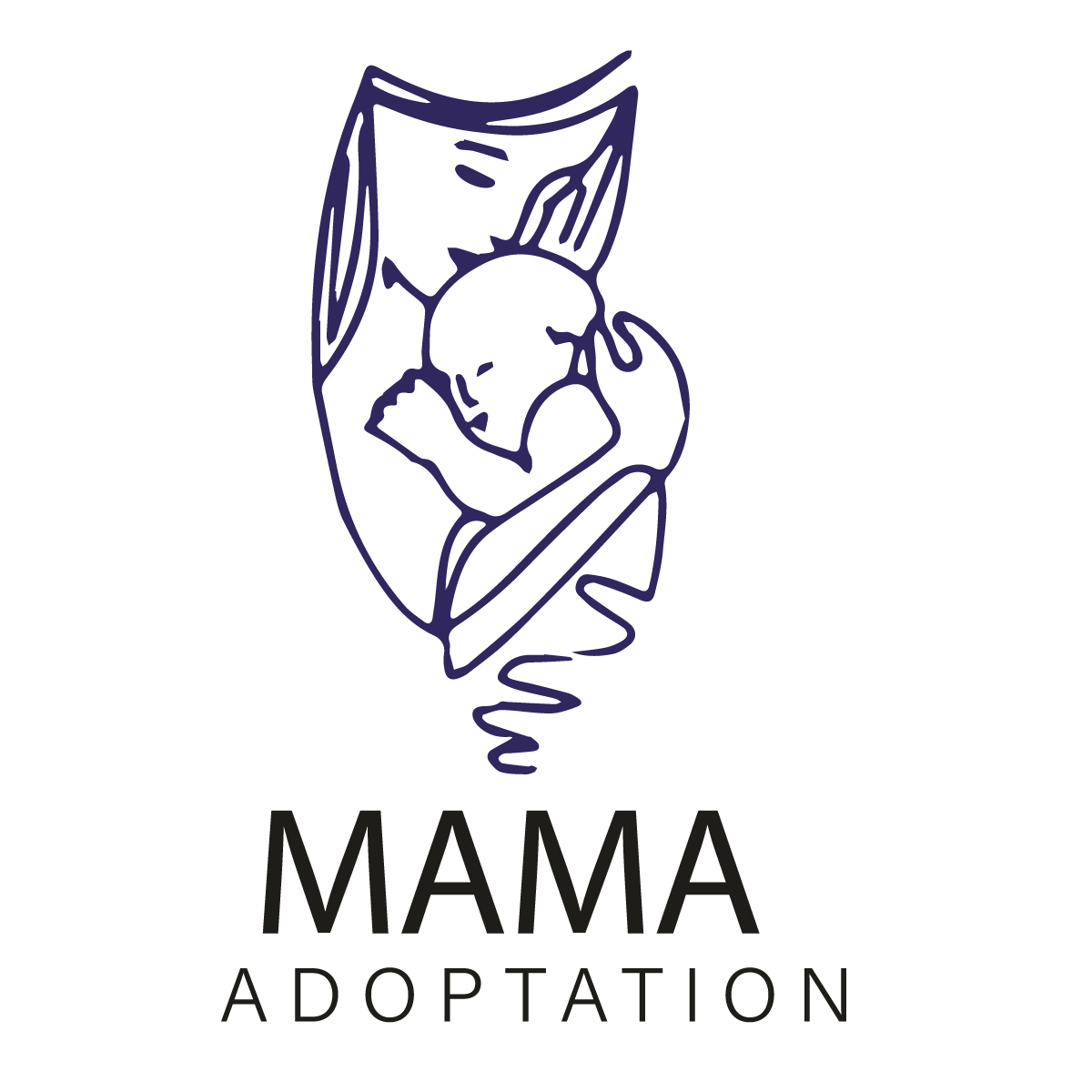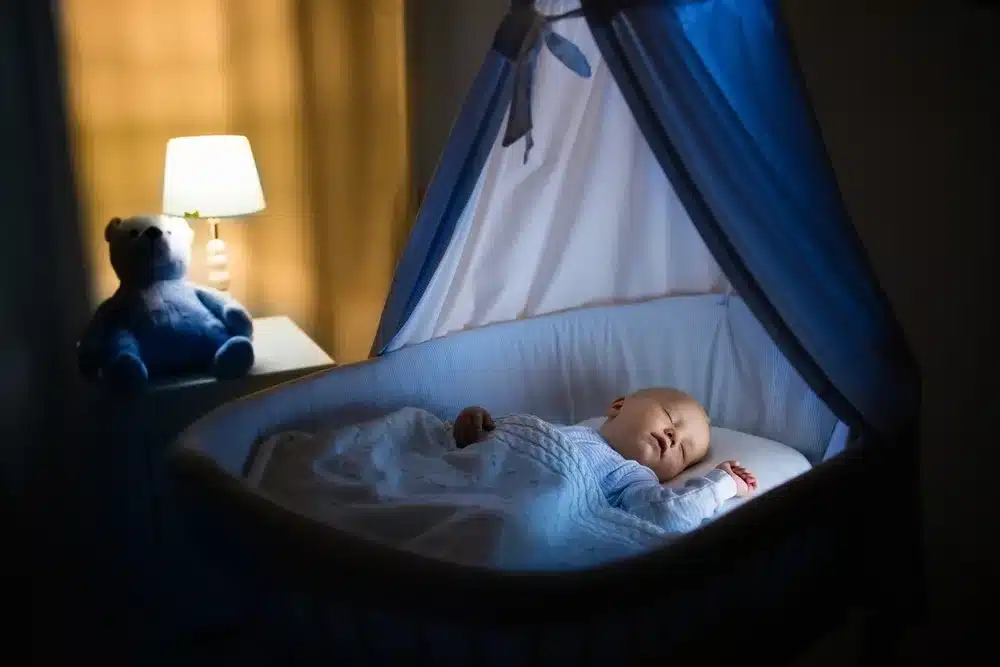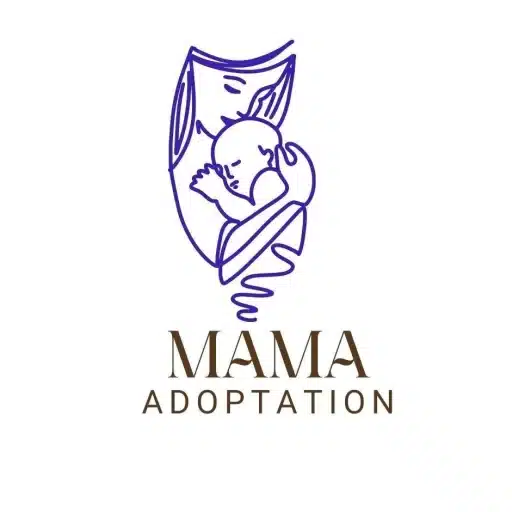Becoming a parent is a joyous but often challenging experience. One of the many questions that new parents face is, “How long can my baby sleep in a bassinet?” Bassinets are a popular choice for newborns and young infants, but understanding the right duration for using them is essential for your baby’s safety and comfort. Infant bed is designed to restrict them from bed and its design makes them capable of standing and climbing out.
- When Should You Move Your Baby Out Of The Bassinet?
- What is Bassinet?
- Are Bassinets Good For Newborns?
- Types Of Bassinets
- What are the pros Of Sleeping a Baby in a bassinet?
- What are the cons of a Baby Sleeping in a Bassinet?
- When to stop using a Bassinet?
- What Age Should a Baby Move To Their Own Room
- Transition into Bed
- Conclusion
- FAQ’s
Most bassinets are designed for infants from birth to six months of age. However, this duration may vary depending on the specific bassinet model and the growth rate of your baby. As soon as your baby begins to show signs of rolling over or trying to sit up, it’s time to transition to a crib for their safety.
When Should You Move Your Baby Out Of The Bassinet?
Moving your baby out of the bassinet is an important milestone in their development. The timing for this transition can vary from one baby to another, but here are some general guidelines to help you decide when it’s the right time:
1. Age and Weight:
Babies should be moved out of the bassinet by the age of 4-6 months.Most bassinets are designed for newborns and infants until they reach a certain weight limit, typically between 15 to 20 pounds (7 to 9 kilograms). It’s time to consider moving them to a more suitable sleeping arrangement.
2. Physical Development:
Pay attention to how your child is growing physically. They could be overcoming the bassinet if they begin to demonstrate behaviors like rolling over or trying to sit up. These innovations may not be safe in a small area like a bassinet.
3. Space and Comfort:
Assess whether your baby has enough space to move around and be comfortable in the bassinet. As they grow, they may start feeling cramped in the limited space, leading to discomfort and disrupted sleep.
4. Sleep Patterns:
Pay attention to your baby’s sleep patterns. If they are consistently waking up frequently during the night and seem uncomfortable in the bassinet, it may be a sign that they need a larger sleep space, such as a crib.
5. Safety Considerations:
Safety is paramount. Ensure that your baby’s head and limbs cannot get stuck between the bassinet’s bars or mesh sides. If you notice any wear and tear on the bassinet, it’s time to retire it for a more secure sleeping arrangement.
6. Developmental Milestones:
Every infant develops at an independent rate, reaching milestones in their development. It’s possible that some babies will be ready to move into cribs sooner than others. Observe their development and get advice from your pediatrician.
Related: How to Clean a Bassinet – Compulsory to Know
7. Sudden Infant Death Syndrome (SIDS) Prevention:
National Institute OF Health and Sciences recommends making sure children sleep on their back, utilizing a firm mattress with a fitted sheet, and organizing your bedroom to provide space for blankets, pillows, and stuffed animals to prevent SIDS.
For safety and comfort reasons, it is often best to plan the switch from a bassinet to a crib well in advance of your infant outgrowing the bassinet or reaching the weight restriction. This makes the transition easier and less stressful for the parents as well as the infant. Keep in mind that each infant is different, so what suits one might not suit another. Pay close attention to your infant’s indications and requirements, and seek individual advice from your pediatrician regarding when to take your child out of the cot.
What is Bassinet?
For babies and early infants, a bassinet is a small, lightweight bed. It’s perfect for tiny rooms and for keeping your baby close by at night because it’s smaller than a crib. A comfortable, shaded sleeping space can be created with the hoods or canopies that accompany bassinets, which frequently have choices for rocking or swaying the infant to sleep. Some variants include built-in storage for baby necessities, and mesh sides provide good ventilation and visibility. Although they are usually used for the first few months of a baby’s life, parents should move their kid from a bassinet to a crib as soon as they outgrow it or begin to sit up or roll over in order to ensure their safety and comfort.
Following the recommendations for safe sleep is essential, including placing the baby on their back to sleep and keeping the sleeping area free of loose bedding and toys, to reduce the risk of Sudden Infant Death Syndrome (SIDS).
Are Bassinets Good For Newborns?
Bassinets can be a good choice for newborns, and they offer several advantages for early infant care. Here are some reasons why bassinets are considered a suitable option for newborns:
1. Proximity to Parents: Bassinets are designed to be placed right next to the parents’ bed, allowing easy access for nighttime feedings and comforting. This proximity can be especially helpful in the early weeks when newborns wake frequently during the night.
2. Compact Size: Bassinets are smaller and more space-efficient than cribs, making them a practical choice for families with limited space in their bedrooms.
3. Portability: Many bassinets are lightweight and come with wheels or handles, making them easy to move from room to room. This portability allows parents to keep their newborn close during daytime naps and other activities.
4. Safety: Bassinets typically have a smaller sleeping area, which can help reduce the risk of a newborn rolling into positions that could pose a suffocation risk. They also often feature mesh sides for proper ventilation and visibility.
5. Cozy and Enclosed Space: The cozy, enclosed sleeping space in a bassinet can help newborns feel secure and snug, which can contribute to better sleep and comfort.
6. Convenience: Bassinets often come with convenient features such as rocking or swinging mechanisms, built-in storage, and hoods or canopies for shade and privacy.
It’s crucial to remember that bassinets have age as well as weight restrictions, and your baby will eventually grow out of them as they get bigger and more active. When your baby reaches the weight restriction indicated by the manufacturer or begins to roll over or sit up, it’s usually advisable to move them from a bassinet to a crib because these activities can become dangerous in a bassinet.
In conclusion, bassinets can give babies a secure and practical place to sleep, enabling parents to keep their child close by for nighttime care. To protect your baby’s health, it’s critical to adhere to healthy sleep practices and select a bassinet that satisfies safety requirements.
Types Of Bassinets
There are many types of bassinets available in the market. I have mentioned some of them.
1. Travel Bassinets: These are highly portable and lightweight bassinets designed for travel. They can be folded or disassembled for easy transport, making them ideal for trips or visits to family and friends.
2. Traditional Bassinets: These are the classic, standalone bassinets with a basket-like structure supported by a stand. They often come with wheels or handles for easy mobility.
3. Co-Sleeper Bassinets: Co-sleeper bassinets are designed to be attached to the side of the parents’ bed, allowing the baby to sleep in a separate yet closely connected space.
4. Rocking Bassinets: Some bassinets come with a rocking or swinging feature, which can help soothe fussy babies and encourage sleep. These are particularly useful for babies who enjoy gentle motion.
5. Convertible Bassinets: Convertible bassinets can transform into other baby furniture as your child grows, such as a changing table or a playpen. They are versatile and provide extended value
6. Hooded or Canopy Bassinets: These bassinets come with hoods or canopies that provide shade and a cozy, enclosed sleeping space for the baby.
7. Moses Baskets: Moses baskets are a type of portable bassinet made of woven materials such as straw or wicker. They often have carrying handles for easy transport.
8. Bassinet Attachments: Some strollers and playards come with bassinet attachments, allowing your baby to sleep comfortably while on the go or during playtime.
9. Bassinet with Storage: Some bassinets are equipped with built-in storage compartments or shelves, providing convenient storage space for baby essentials like diapers, blankets, and clothes.
10. Bassinet Playards: These are combination products that offer both a bassinet for infants and a playpen for older babies and toddlers.
The choice of a bassinet type depends on factors such as your living space, lifestyle, and specific needs. When selecting a bassinet, it’s essential to consider safety features, weight limits, and adherence to safe sleep guidelines. Always choose a bassinet that meets safety standards to ensure the well-being of your baby.
What are the pros Of Sleeping a Baby in a bassinet?
Sleeping a baby in a bassinet offers several advantages, making it a popular choice for newborns and infants. Here are some of the pros of using a bassinet:
- Proximity to Parents: Bassinets are designed to be placed close to the parents’ bed, allowing for easy access during nighttime feedings, comforting, and monitoring the baby. This proximity promotes bonding and reassurance for both parents and the baby.
- Convenience: Having the baby in a bassinet next to your bed makes nighttime care more convenient. You don’t need to go to a separate room, which can reduce sleep disruption and make nighttime feedings less stressful.
- Safe Sleep Practices: Bassinets are designed with safety in mind, often featuring mesh sides for proper ventilation and visibility. This promotes safe sleep practices, such as placing the baby on their back to sleep and keeping the sleeping area free from loose bedding, pillows, and stuffed animals.
- Comfort: The cozy, enclosed sleeping space in a bassinet can make the baby feel secure which can contribute to better sleep and comfort.
- Small Footprint: Bassinets are generally smaller and more space-efficient than cribs, making them suitable for small bedrooms.
- Portability: Many bassinets are lightweight and come with wheels or handles, allowing easy mobility.
- Transition Ease: Bassinets can serve as a transitional sleeping space for newborns, allowing them to gradually adjust to sleeping in their own room or crib as they grow older.
- Rocking or Swinging Feature: Some bassinets come with a rocking or swinging feature, which can help soothe a fussy baby to sleep.
- Hood or Canopy: Bassinets often have a hood or canopy that provides shade and creates a peaceful, enclosed sleeping environment for the baby.
- Saves Money: Bassinets can be a cost-effective choice for the first few months of a baby’s life, especially if you plan to have the baby in your bedroom temporarily before transitioning to a crib.
No doubt! Bassinets have so many benefits but it is important to choose the right bassinet for your little one and ensure it fulfills all the necessities of a baby.
What are the cons of a Baby Sleeping in a Bassinet?
While bassinets offer several benefits, there are also some potential drawbacks or cons to consider when it comes to having a baby sleep in a bassinet:
1. Limited Lifespan: Bassinets have weight and age limits, and babies will eventually outgrow them. This means you’ll need to transition your baby to a crib or other larger sleeping arrangement once they exceed these limits, which can be an additional cost.
2. Space Constraints: The smaller size of bassinets can become a limitation as your baby grows. Some babies may outgrow the bassinet in terms of space and comfort sooner than others.
3. Mobility: While the portability of a bassinet is an advantage, it can also be a drawback if you find it challenging to move the bassinet from room to room or if it doesn’t fit well through doorways or in certain areas of your home.
4. Cost: While bassinets are generally less expensive than full-sized cribs, they can still be an added expense, especially if you plan to purchase a separate crib once your baby outgrows the bassinet.
5. Safety Considerations: Make sure the bassinet you select satisfies safety requirements and is in good working condition. It’s possible that older or used bassinets don’t offer as much safety as more recent versions.
6. Limited options: Compared to cribs, bassinets could have fewer options like movable mattress heights or toddler bed conversions. This implies that when your child develops, you might need to make further furniture purchases.
7. Disturbed Sleep: Although having a bassinet close by could be handy for overnight care, it can also cause parents’ sleep to be disturbed if their infant wakes up a lot or makes loud noises while they sleep.
8. Transition Challenges: Moving the baby from a bassinet to a crib or a different sleeping arrangement can be a difficult transition for some babies just because they were used to their small space.
When to stop using a Bassinet?
The decision to stop using a bassinet for your baby depends on factors such as weight, development, comfort, and safety. Typically, most bassinets are suitable for newborns and infants up to around 6 months of age or until they reach a weight limit, which is commonly between 15 to 20 pounds. However, it’s essential to pay close attention to your baby’s individual developmental milestones, such as rolling over or attempting to sit up, as these can indicate the need for a transition to a crib.
What Age Should a Baby Move To Their Own Room
Depending on personal preferences, a baby should move into their own room at a different age for every household. Although there isn’t a hard and fast rule, professionals and groups like the American Academy of Pediatrics (AAP) provide some broad recommendations to take into account:
1. Around 6 Months
Many experts recommend that babies should ideally sleep in the same room as their parents for the first six months of life. This is primarily to reduce the risk of Sudden Infant Death Syndrome (SIDS), as having the baby close by allows for easier monitoring and nighttime care.
2. Up to 1 Year:
The American Academy Of Pediatrics suggests that it’s safe and beneficial for babies to share a room with their parents for at least the first six months, but ideally for up to a year. This prolonged room-sharing can have both safety and emotional benefits for the baby.
3. Individual Preferences:
Although the guidelines advise up to a year, some parents and infants may naturally move into separate rooms sooner, and others may decide to stay in shared quarters for a longer amount of time depending on their individual needs and preferences.
- Developmental Milestones: Pay attention to your baby’s developmental milestones. When the baby starts sleeping through the night and you feel comfortable with the move, it might be an appropriate time to consider transitioning to their own room.
- Quality of Sleep: Consider how well everyone in the household is sleeping. If a baby’s presence in the same room is causing disrupted sleep for parents or other family members, it might be a sign that it’s time for the baby to have their own room.
- Safe Sleep Practice: Regardless of when you make the transition, always follow safe sleep practices for your baby. This includes placing them on their back to sleep, using a firm mattress with a fitted sheet, and keeping the sleeping environment free of loose bedding, pillows, and stuffed animals to reduce the risk of SIDS.
Ultimately, the decision on when to move a baby to their own room should be based on your family’s comfort and individual circumstances. It’s important to prioritize both your baby’s safety and the quality of sleep for everyone involved. Some parents may choose to room-share for the recommended duration, while others may make the transition earlier or later based on what works best for their family.
Transition into Bed
As your baby grows and reaches the age of around six months or when they display signs of increased mobility, it’s time to transition to a crib. Cribs provide a safer environment for older infants who are more active and mobile.
Conclusion
The transition from a bassinet to a crib and eventually to a separate room is a significant milestone for both the baby and parents. It should be guided by factors such as age, weight, safety, and individual circumstances. While bassinets offer many advantages, the decision to move your baby to their own room is a personal one. Safety, comfort, and adherence to safe sleep practices should be prioritized.
FAQ’s
Q1: Can my baby sleep in a bassinet beyond the recommended weight limit if they still fit comfortably?
It’s important to follow the manufacturer’s guidelines and discontinue using the bassinet once your baby reaches the specified weight limit. Exceeding this limit may compromise the safety and stability of the bassinet.
Q2: Can I use a bassinet for twins or multiple babies?
Most bassinets are designed for a single baby. Using a bassinet for twins or multiples is not recommended due to safety concerns. It’s advisable to use separate sleep spaces for each baby.
Q3: When should I stop using a bassinet if my baby is preterm or has special health considerations?
Babies with special health considerations or born prematurely may have different developmental timelines. It’s crucial to consult with your pediatrician for personalized guidance on when to transition your baby out of the bassinet based on their specific needs and progress.
Q4: Can my baby use a bassinet during naps and a crib for nighttime sleep?
Yes, it’s common for babies to use a bassinet during daytime naps and a crib for nighttime sleep. Ensure that both the bassinet and crib meet safety standards and provide a comfortable sleeping environment.
Q5: Are there any specific guidelines for choosing a bassinet that ensures my baby can use it for the intended duration?
To maximize the time your baby can use a bassinet, select one that adheres to safety standards, has an appropriate weight limit, and provides ample space for your baby to grow. Always follow safe sleep practices, and regularly inspect the bassinet for signs of wear and tear.
Q6: What should I do if my baby seems too big for the bassinet but is not yet ready for a crib?
If your baby outgrows the bassinet in terms of size or weight but is not developmentally ready for a crib, consider transitioning to a portable playpen or play yard designed for older infants. These can provide a safe and roomier sleeping space.
Q7: Can I use a bassinet extension or add an insert to make it suitable for older babies?
It’s not recommended to modify a bassinet with extensions or inserts to accommodate older babies. Doing so can compromise safety and increase the risk of accidents. It’s best to transition to an appropriate sleeping arrangement for your baby’s age and size.
Q8: What’s the best way to prepare my baby for the transition from a bassinet to a crib?
To ease the transition, gradually introduce your baby to the crib by letting them spend some awake and supervised time there during the day. Maintain a consistent bedtime routine and ensure that the crib is a safe and comfortable sleep environment.
Q9: Is there a specific age when all babies should move from a bassinet to a crib?
There is no specific age that applies to all babies. The transition from a bassinet to a crib depends on factors like your baby’s weight, developmental milestones, and personal preferences. It’s a decision best made based on your baby’s unique needs and circumstances.
Q10: What should I look for in a crib when transitioning my baby from a bassinet?
When transitioning to a crib, ensure it meets safety standards, has a firm mattress with a fitted sheet, and does not contain any loose bedding, pillows, or stuffed animals. Follow the same safe sleep practices you used with the bassinet to create a safe sleeping environment for your baby.
Related: Can a Newborn Go Straight To The Crib? (And Skip The Bassinet)








